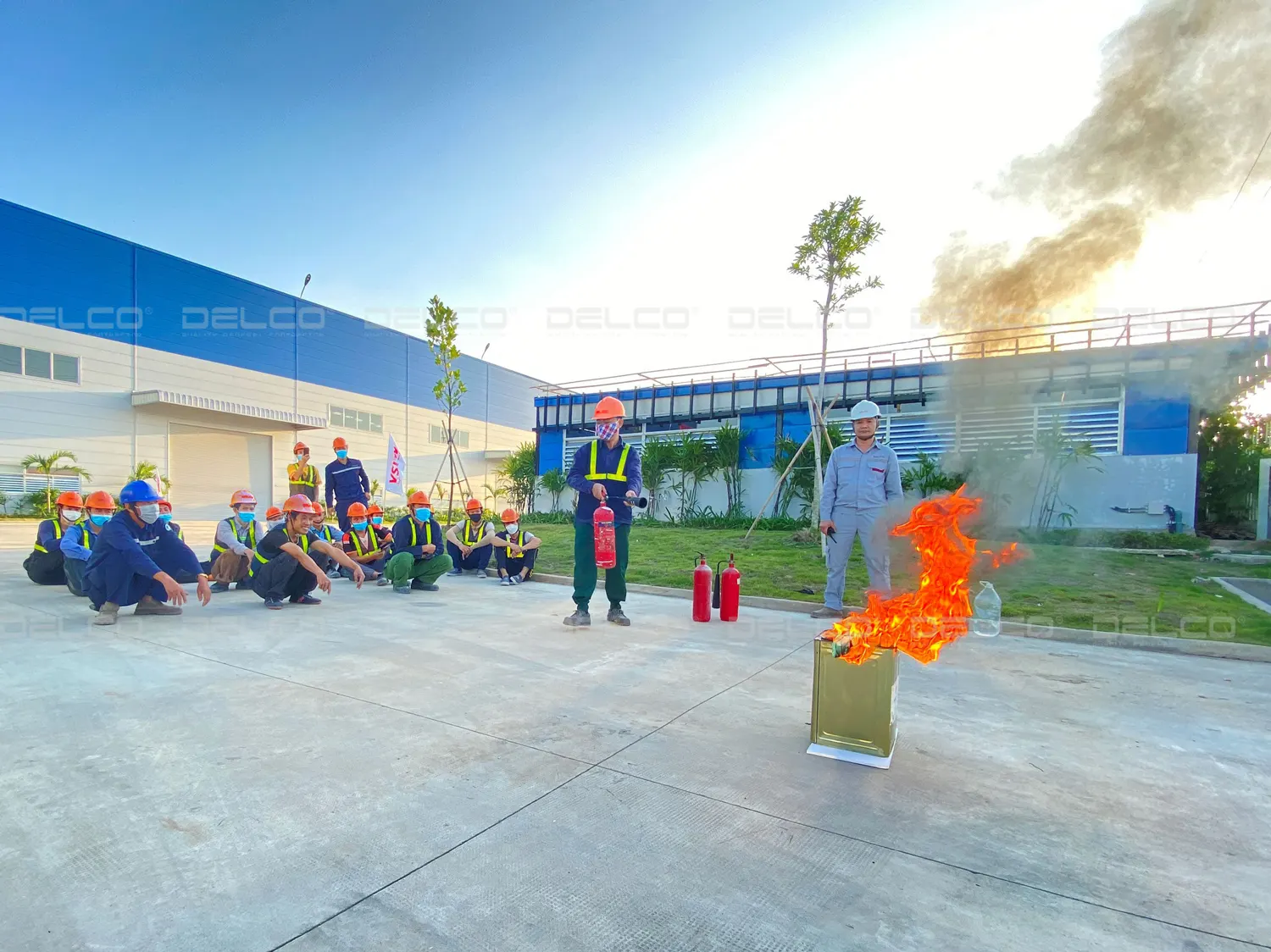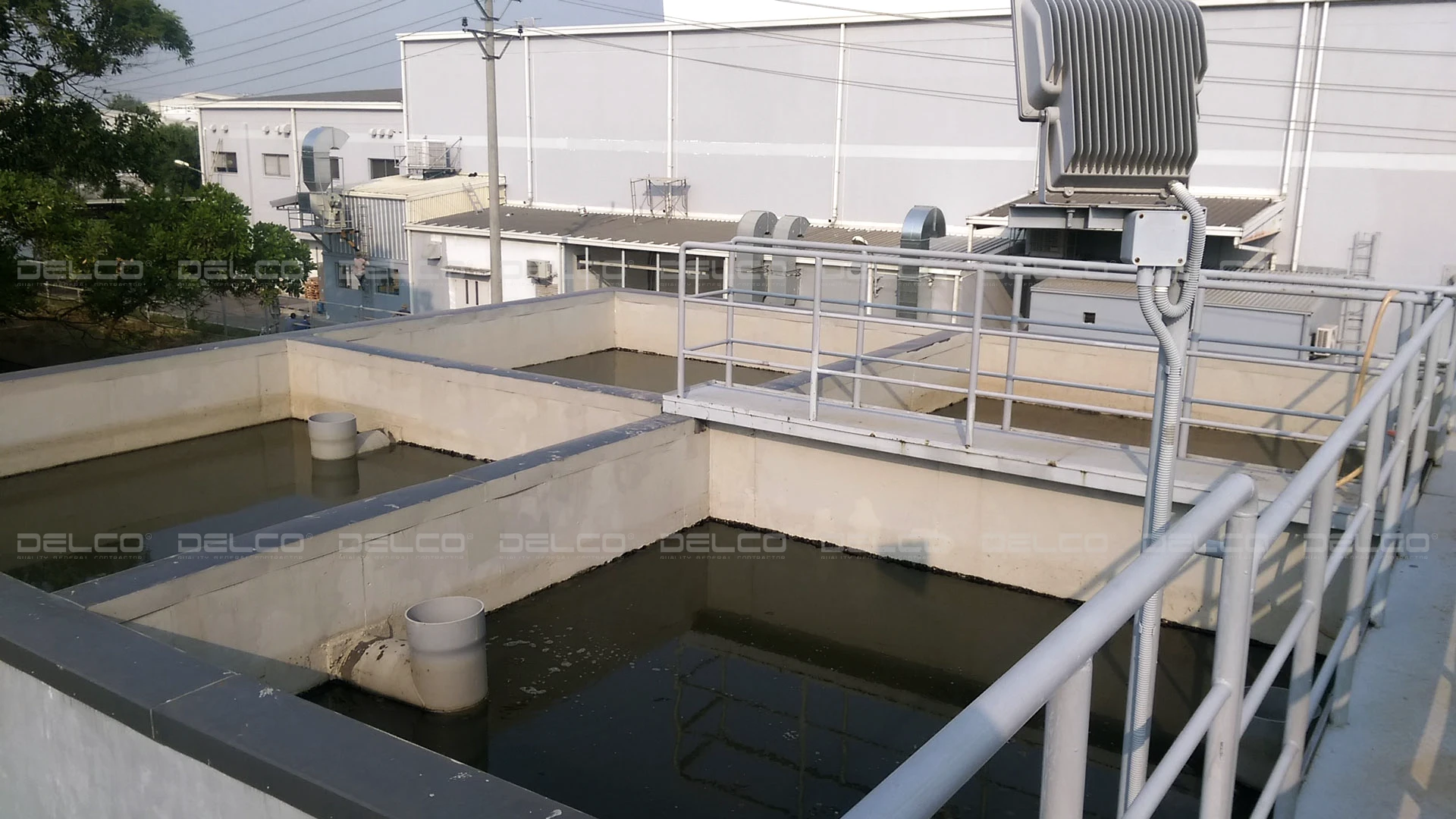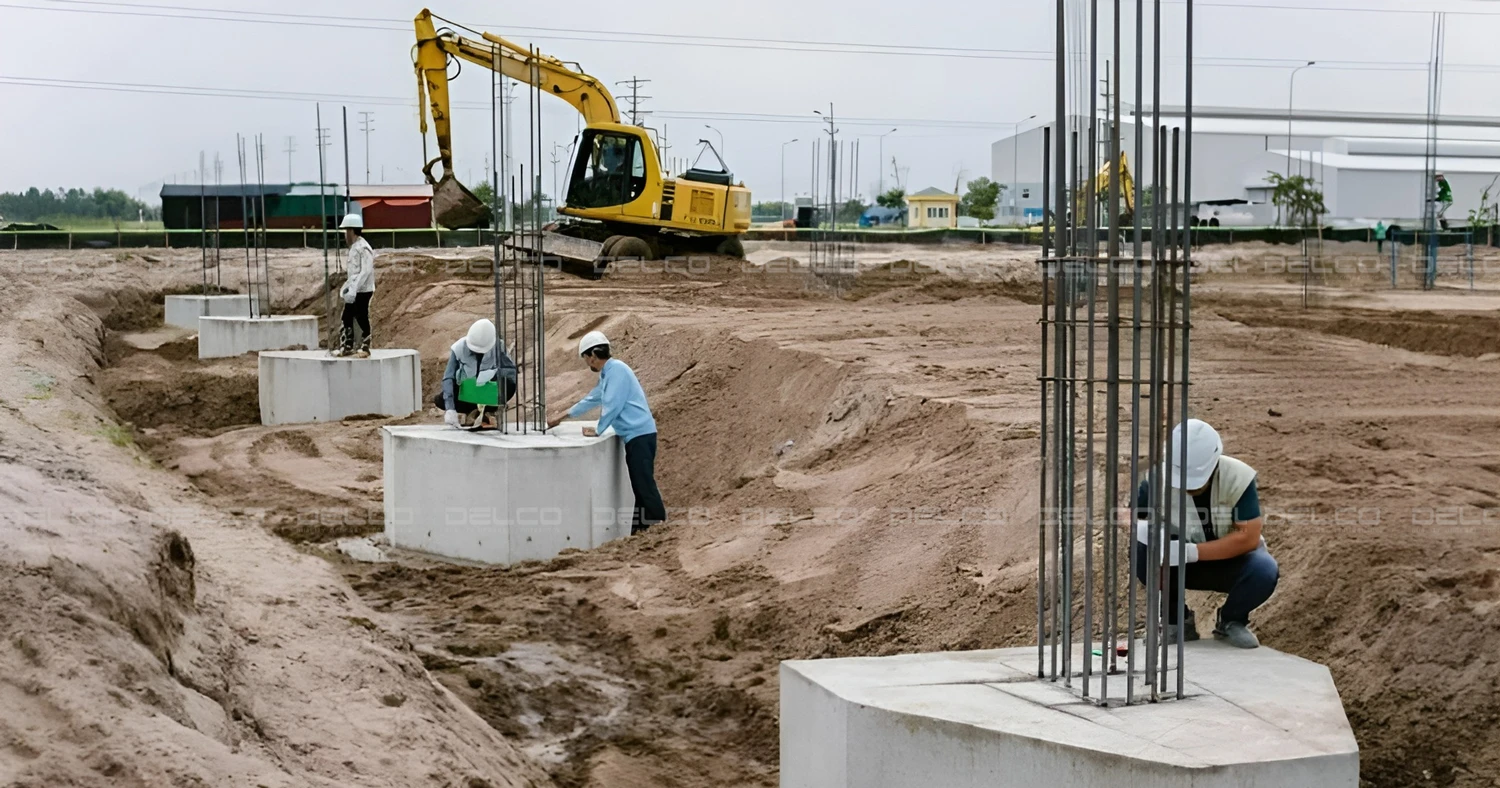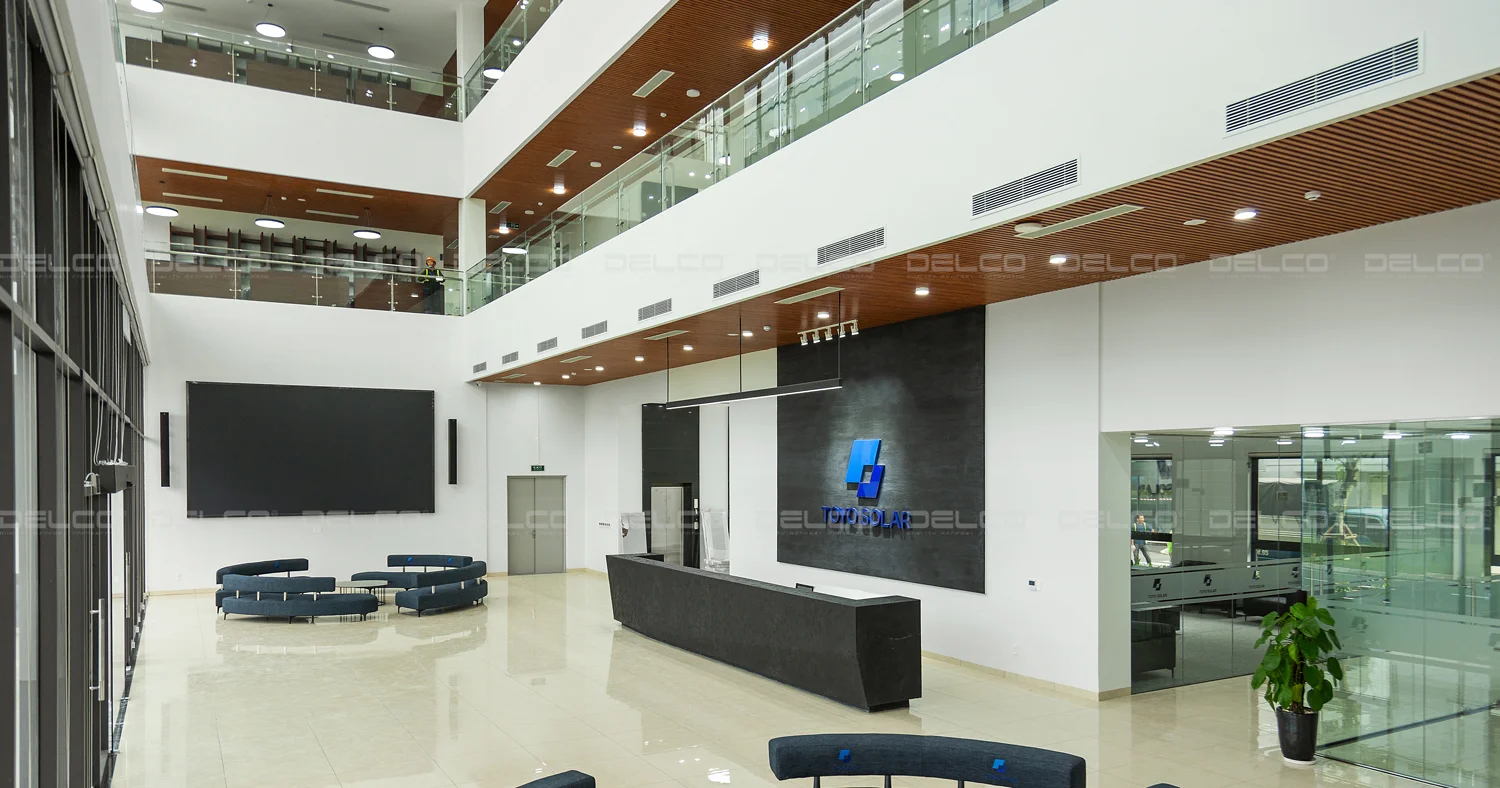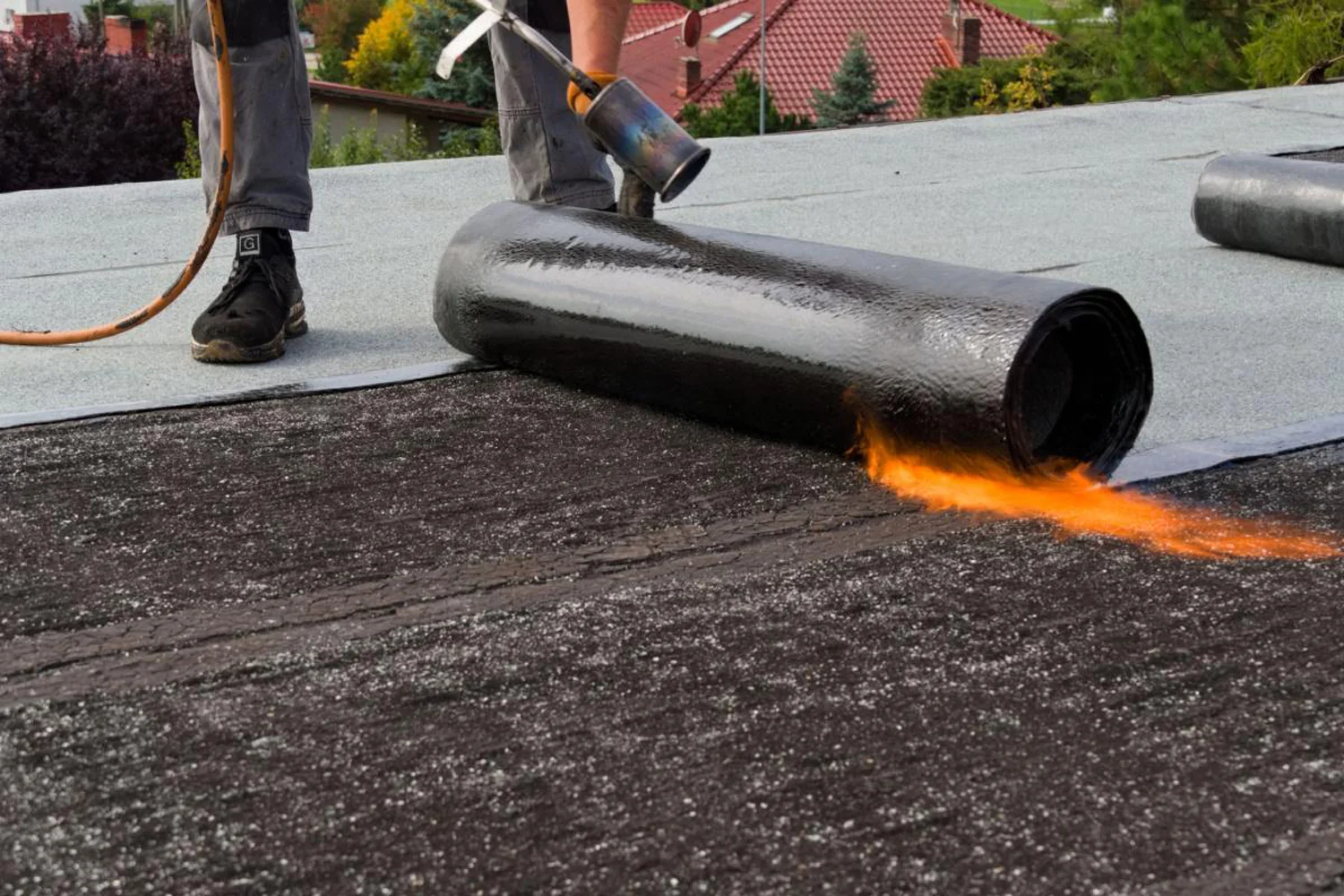The trend of HVAC technology integrated with smart, energy-saving technologies will help investors optimize operating costs and ensure a stable and efficient production environment.
Use green refrigerants instead of HFC(hydrofluorocarbon)
HFC is a commonly used refrigerant in traditional HVAC systems and is one of the factors causing global warming. Therefore, to protect the environment and move towards sustainability, the AIM Act directed the US Environmental Protection Agency to gradually reduce the production and consumption of HFC by 85% by 2036.
Amidst the trend of reducing the production of HFC refrigerant, using green, environmentally friendly refrigerants to reduce emissions is focused on and invested in. In Vietnam, environmentally friendly refrigerants used in green HVAC systems include R-32, R-1234yf, and R-290. These are all environmentally friendly refrigerants, have high efficiency, do not cause greenhouse effects and have little impact on the ozone layer.

HVAC system of Power Plus Technology factory in Bac Ninh, with DELCO as the Design – Build General Contractor
Noise reduction technology
Noise problems in HVAC systems arise from many different equipment such as fans, compressors, ducts, etc. Excessive noise levels can affect workers as well as the daily life of the residential area around the factory. Therefore, new HVAC technology today focuses on minimizing noise, improving soundproofing and providing optimal sound control measures.
Noise reduction solutions are implemented such as innovating the design and motor of the propeller, using acoustic enclosures to reduce noise from the compressor and air handler, applying vibration isolation techniques and using duct lining materials to reduce noise through ducts, etc. These solutions will help the HVAC system operate quieter, minimizing the problem of noise pollution in industrial parks.
Improve air quality
Indoor Air Quality (IAQ) Index is often used to evaluate the air quality inside and around the building, which directly affects the health and life quality of people working indoors. At specific factories such as electronic component factories, pharmaceutical factories, and food factories, the IAQ index not only affects the workers’ health but can also directly affect the production process and quality. Therefore, HVAC systems that help improve air quality in factories are increasingly being invested in. New technology trends include: using advanced air filters, using specialized air handling units (AHUs) combined with constructing ceilings and walls with specialized materials that do not create dust, helping ensure air quality and maintain standard humidity.

The clean room area at the DAINESE factory with DELCO as the MEP Design – Construction General Contractor, which prevents dust from entering and sticking to the product when taking out the product from the paint booth.
HVAC saves energy
Energy saving is one of the important factors that every business is concerned about. Using inverter technology in an HVAC system is an effective method to control equipment capacity, thereby reducing energy waste. Besides, applying inverter technology also helps the HVAC system cool more evenly, improve air quality, and effectively reduce noise and emissions.

VRF inverter central air conditioning system, at Toyo Solar Phu Tho factory with DELCO as the General Contractor for Design – Construction of finishing and interior designing
Use renewable energy
Using renewable energy such as solar and wind energy to reduce impact on the environment has become an inevitable trend in the construction industry. In Vietnam, air conditioning systems using solar energy or water Chillers are gradually widely used. Solar heating systems are equipped with pumps and heat storage that retain heat longer, ensuring the system operates normally even when there is not enough sunlight to generate heat. This helps businesses save costs effectively as well as significantly reduce carbon emissions into the environment.

In addition, using wind energy for HVAC systems is also focused on. Wind energy is used in green HVAC systems through ventilation systems, air pressure reduction systems and techniques that use the natural force of wind to push air to help businesses significantly reduce power consumption.
Smart HVAC trend
Smart HVAC technology gradually replaces traditional HVAC systems and is used in many businesses. Some new HVAC systems today are equipped with smart control systems that can integrate IoT to help businesses manage and control remotely on phones, laptops, etc.

Chiller system integrated with smart technology at Dainese factory with DELCO as the MEP Design – Construction General Contractor
Some new HVAC technologies are also equipped with sensors to identify people and automatically adjust the room temperature to suit the space and number of employees within the factory, thereby optimizing and saving energy for HVAC systems.


